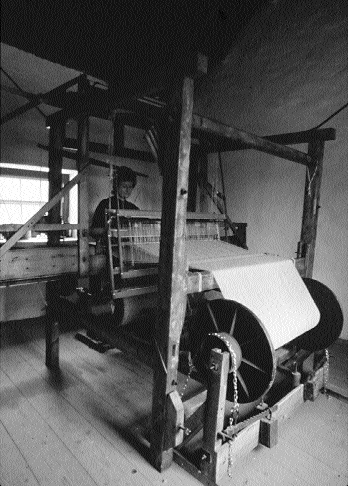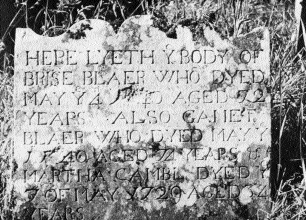The Scotch-Irish & the Eighteenth-Century Irish Diaspora
Published in 18th-19th Century Social Perspectives, 18th–19th - Century History, Features, Issue 3 (Autumn 1999), Volume 7Probably no other ethnic group in North America has had as much ink spilt on the usage of the terminology applied to define them than those labelled the Scotch-Irish or Scots-Irish. Those exploring the historical phenomenon of migration from Ireland to North America now use the term, which always retained a certain ambiguity, less frequently. The Scotch-Irish, however, are firmly lodged in the established mental map of American ethnology and the challenge to replace this terminology remains unfulfilled. The last two decades have seen considerable historical revision in relation to eighteenth century Ireland and the stream of emigration which emanated from it. The growing awareness of the more heterogeneous make-up of the Irish diaspora and the current debate about Ulster-Scots culture and identity in Northern Ireland, perhaps converge to make this an apposite juncture for a review.
Scotch mist
As an American construct, the exact nature of the migrant fusion between Scottish and Irish influences has often been prone to a degree of haziness. The profusion of popular historical literature on the far side of the Atlantic has generally served to reduce visibility further. The establishment of a connection between those leaving the northern half of Ireland for colonial America in the early eighteenth century and British settlers in Ireland in the previous century has proved problematic. The term ‘Scotch-Irish’ clearly implies that those who emigrated across the Atlantic were descended from those who came to Ireland from Scotland and yet we know that the majority of British settlers in seventeenth-century Ireland originated in England and Wales. Even in Ulster, where Presbyterians from the Scottish lowlands settled in greatest numbers, there was substantial settlement by those from England and Wales. That Presbyterians, predominantly of Scottish origin, formed the largest element within Ulster emigration to colonial America is not disputed but Anglicans and Quakers of English stock also left. Kerby Miller has estimated that 30 per cent of those leaving Ulster for colonial America were Protestant but not Presbyterian. Furthermore, the notion of complete ethnic and religious separation and segregation in the century before large-scale emigration commenced around 1716, is untenable. This point was acknowledged a generation ago. Writing of seventeenth-century Ulster, Estyn Evans noted that ‘there was much more intermarriage, with or without the benefit of clergy, than the conventional histories make allowance for. Many planters became Catholics and many natives became Protestants.’ In short, the boundaries of a separate Ulster Scots community were ill-defined a century after the Jacobean plantation.
The majority of those taking ship from ports such as Belfast, Derry or Newry in the early part of the eighteenth century were not, by and large, leaving a country where their families had been resident for over a century. Apart from the fact that there was significant, if spasmodic, return migration to Scotland during the seventeenth century, the greatest volume of Scots came to Ireland during the second half of the century. A contemporary observer reported the influx of 50,000 Scots in the 1690s. Although almost certainly an exaggeration, the combination of low land prices in the wake of the Williamite war and sustained harvest failure leading to famine conditions in Scotland, ensured a strong fin de siècle surge in westward migration across the North Channel. Evidence suggests that those who came after 1695 and as a response to the severest of famines in Scotland were significantly poorer than previous Scots settlers. Historians of the Scotch-Irish, often with notions of ‘doughty Scots planters’, have not generally framed their subjects as famine immigrants and this is certainly a depiction absent from much of the late nineteenth and early twentieth-century historiography.
In the blood?
Another feature, which has bedevilled much of what has been written about those described as the Scotch-Irish, is the absence of historical context and little account of change over time. The impression of almost seamless continuity from one generation to another is quite pervasive in the history that was fashioned a century ago and indeed remains potent in many popular histories of our own time.

Ricky Skaggs-‘definite Ulster-Scots roots’? (Hot Press)
For example, Rory Fitzpatrick’s God’s Frontiersmen: The Scots-Irish Epic (London 1989) refers to the lawlessness of the English/Scottish border region in the sixteenth century as a factor explaining patterns of behaviour among Ulster Presbyterian settlers in eighteenth-century backcountry America. Yet, convicted border reivers were a small minority of those who settled in the northern half of Ireland during the early seventeenth century. Over a century later when the first large-scale emigration from Ulster got under way the society they left was far removed from a lawless frontier zone. Furthermore the context of settlement in the New World was not homogeneous and was arguably much more influential in shaping patterns of settler behaviour than distant ancestral experience.

Dolly Parton-‘strong Scots-Irish blood’? (Hot Press)
More recently Billy Kennedy’s The Scots-Irish in the Hills of Tennessee (Londonderry 1995) has alluded to the link between the traditional music carried to the southern backcountry in the eighteenth century and contemporary country and western music. Kennedy makes reference to the ‘strong Scots-Irish blood’ which flows through the veins of Dolly Parton and the ‘definite Ulster-Scots roots’ of Ricky Skaggs, another top American country music star. Kennedy then presents the narrative from the musical documentary at Dolly Parton’s East Tennessee theme park as confirmation of the link. He quotes the following passage:
And so they came…a strong willed people who forged their homes out of this region and brought their love and beauty with them. The deeds of our Scots-Irish ancestors are blended with the skills of the musicians who seized the Smokies’ fiery spirit and this heritage has been passed on from generation to generation.
The clear emphasis in both accounts is on the continuity of traits and traditions almost in isolation from geographical context or historical change.
The sparseness of material artefacts relating to the migration and settlement of emigrants from Ulster to North America during the eighteenth century has also played some part in shaping this emphasis on what one might call persistent folkways. The difficulty of demonstrating palpable change over time through the evolution of everyday objects is substantial and has placed a heavier burden on non-material culture in the exploration of Scots-Irish heritage. Given the fact that those who left Ulster for colonial America were not on the whole materially rich, the study of their music, song, lore, leisure pursuits, etc. has a great deal to contribute to an understanding of their experience. It is essential, however, that the methodologies employed in this endeavour are thorough and not ultimately ahistorical.
New Ulster, new emigrants
The Irish eighteenth century is viewed very differently today than was the case a generation ago. The book titles serve to chart the course of revision, with ‘penal era’ and ‘hidden Ireland’ giving way to ‘new foundations’ and ‘the long peace’. The appreciation of the rapid commercialisation of society, particularly in Ulster, has obvious implications for the interpretation of Ulster emigration to colonial America. In broad terms, religion as an explanatory ‘push’ factor has given way to economic factors. The exodus of large numbers of Presbyterians from Ulster had more to do with the regime of rents, leases and harvests than it had with persecution by Anglican church and state. There is also a growing recognition of change over time. The traditional landmark date employed to differentiate early modern from modern emigration was 1776, the commencement of the American Revolution which effectively put America off limits for the following six years. Yet in many ways this date reflects American factors rather than Irish. Even in these terms the picture is changing. The rapid switch from passages undertaken by recourse to indentured servitude, before the Revolution, to those made by fare-paying passengers thereafter, has to be challenged in the light of recent work by Marianne Wokeck. Her comparative study of Irish and German migration to colonial America found that of the Northern Irish landed in the ports of the Delaware Valley between October 1771 and May 1772 only 9.7 per cent had been unable to pay their fare in advance.
It is clear that the context that conditioned the emigrant’s decision to leave was also changing. In short, the emigrant of 1720 was not subject to the same set of forces as the emigrant of 1770. On the basis of a revised interpretation of Irish and indeed Atlantic history in the eighteenth century it is evident that detectable and significant changes in the character of emigration were occurring from around the middle part of the eighteenth century. In the first half of the eighteenth century the Irish economy remained structurally weak in relative terms. The vulnerability of society to mortality crises such as those suffered during the late 1720s and during the famine of 1740-41 was perhaps the starkest measure of this economic fragility.

Emigrants from the period after 1763 were generally equipped with greater skills than those who had gone before. (Ulster American Folk Park)
The major surges in emigration during this period were closely correlated with subsistence crises. Throughout the seventeenth century food crises had impelled Ireland’s poor to migrate internally towards the towns, particularly Dublin and towards Britain and even the near continent. By the 1720s the New World had become an additional option for those escaping hard times at home. It is notable how little contemporary comment was directed towards the downturn in the linen trade during the later 1720s as a factor in conditioning emigration. The industry, even in its Ulster heartland, was not yet fully developed. Harvest failures triggered those cited by Archbishop Boulter as ‘the middle and meaner sort of people’ to escape the oppressive regime of rising rents and restrictive leases. Despite the ‘Black ‘47’-like panic to get out of Ireland and the fact that demand for shipping outstripped supply, the bulk of emigrants from Ulster ports were able to pay their fare. More than anything this probably reflected the capacity of tenants to realise capital during a crisis by selling their interest in a holding, what would later become known as the ‘Ulster Custom’.
The decade and a half before the outbreak of the American Revolutionary War witnessed the strongest and most consistent wave of emigration from the northern province to the ports of the Delaware valley. L.M. Cullen has convincingly argued that this exodus was different in character from the largely crisis-driven emigration of the 1720s and 1740s. Rather, he suggests, that this exodus should be viewed as ‘an entirely new development’, shaped by wider and positive economic changes. The spectacular expansion in Ireland’s Atlantic trade after mid-century was accompanied, particularly in Ulster, by intensive development of the linen industry. The net consequence of this accelerated development was the transition to a pattern of migration which drew upon the more skilled, the more informed and provided greater scope for individuals who made rational choices based on perceived opportunities across the Atlantic. It should be stressed that emigration from Ulster and indeed Leinster and Munster was particularly voluminous after the end of the war in America in 1782. The achievement of victory over and independence from the British Crown served to cast America in a new light for Irish Catholics. The new Republic’s esteem was also boosted among Ulster Presbyterians who took particular pride in the achievements of their kith and kin in the New World. Yet if one views emigration from Ulster between 1760 and 1800 the break caused by the Revolutionary War takes on more of the appearance of a hiatus than a transformer. The oft quoted words of John Dunlap, Stabane-born printer of the Declaration of Independence, written in a letter home in 1785, successfully capture the outlook of many Ulster emigrants who had crossed the Atlantic in the decades since the end of the Seven Year’s War in 1763. In criticising the Irish parliament’s attempts to stem emigration, Dunlap offered the opinion that ‘the young men of Ireland who wish to be free and happy should leave it and come here as quick as possible. There is no place in the world where a man meets so rich a reward for good conduct and industry as in America.’
Nineteenth-century construct
One of the difficulties with the use of the term Scotch-Irish as a description of Ulster Presbyterian or Protestant immigrants to colonial America is the very limited evidence that this was a term which such settlers applied to themselves. Where it was used as a label in the eighteenth century at all, it tended to be applied by Tidewater colonial governors in a pejorative way. Those colonial Americans who had occasion to refer to immigrants from Ulster overwhelmingly opted for the simple designation ‘Irish’. Not only did these eighteenth century Ulster Protestant settlers not refer to themselves as Scotch-Irish they generally accepted the label ‘Irish’. This is certainly not to say that no distinctive identity or sub-culture existed among Ulster Presbyterian settlers of Scots heredity. Anglo-American governors had few doubts about the existence of such a phenomenon. Nonetheless, outright rejection of the designation ‘Irish’ was the exception. The transition to a pervasive association between Irishness and Catholicism lay in the future with the mass mobilisation of the O’Connell era.
In seeking to explain why the Scotch-Irish are so firmly lodged in the established mental map of American ethnology today, one must look back to the second quarter of the nineteenth century. An increasingly voluminous flow of Irish Catholics to the United States from the 1820s on accompanied the increasing exclusivity of an Irish identity as the preserve of Irish Catholics. Although increasing cleavage between Protestant and Catholic Irish-Americans was evident from the 1820s it was the mass migration of relatively poorer Catholic immigrants during the Famine decade (1845-55) which decisively compounded separation.

This gravestone from Raloo parish, near Larne, County Antrim, illustrates the impact of famine in early eighteenth-century Ulster. (Patrick Fitzgerald)
In an era of increasing nativist reaction, Protestant Americans of Irish origin had fresh incentive to cultivate an ethnic identity that stressed disassociation from an Irish-American Catholic entity. In 1889 the Scotch-Irish Society of America was organised and its annual congresses sought to popularise the expression Scotch-Irish as the appropriate designation for those who traced their lineage back to the Ulster Presbyterian immigrants. The fact that large numbers of those immigrants and their offspring, particularly in the American south, had left the Presbyterian church for other evangelical Protestant denominations such as the Baptists and Methodists served to muddy the waters further. In 1897 the American-Irish Historical Society met for the first time in Boston and over the next decade and a half the interwoven threads of two centuries of emigration from Ireland to America were consciously unpicked and disentangled. Was it, one wonders, entirely coincidental that at the same time back in Ireland, Nationalist and Unionist increasingly squared up to each other over the thorny issue of Home Rule?
Recent historiography
The standard work on the subject remains Robert. J. Dickson’s Ulster Emigration to Colonial America 1718-1775 (1966). Whilst Dickson was well aware of the explicit subjectivity of much of the historiography and fully acknowledged that emigration from Ulster was not homogeneously Presbyterian, his work remains tightly focused upon the emigrant flow from Ulster ports alone. This fact no doubt influenced Audrey Lockhart’s Some Aspects of Emigration from Ireland to the North American Colonies between 1660 and 1775 (1976) based on research of emigration from northern and southern ports.
Two more recent publications have widened the frame within which eighteenth century emigration from Ulster or Ireland can be considered. James Horn’s ‘British Diaspora: Emigration from Britain, 1680-1815’, in volume II of The Oxford History of the British Empire (1998), sets Irish emigration in a British Isles framework. One of the interesting insights provided by Horn is the potential for future comparative analysis of migration patterns from early modern Ireland and Scotland. In much of what has been written about the Scotch-Irish there is surprisingly little reference to those who had come to America directly from Scotland. Marianne Wokeck’s Trade in Strangers: The Beginnings of Mass Migration to North America (1999) examines Irish immigration to the middle colonies alongside German, the most substantial other ethnic group of immigrants. In relation to the issue of distinctive patterns of emigration from Ulster her conclusions are interesting. The most important difference between emigrants from Ulster ports and those from ports elsewhere in Ireland, was the greater extent to which the former travelled as paying passengers rather than indentured servants and left as family groups rather than as individuals who were predominantly male. This is clearly an important point and has obvious implications in relation to settlement and integration in colonial America. At the same time, however, direct comparison with contemporary German emigration reveals characteristics that were more similar than different between Irish emigrants from north or south. Set against the German experience, Wokeck concludes that Irish emigrants as a whole had easier access to trade, communications and transportation channels to carry them across the Atlantic. Furthermore there was interconnection between Irish ports in terms of trade and a proportion of those ships that left Ulster ports called into southern ports, very likely gaining passengers in the process. Dublin’s role, in particular, exercised an important link between Ulster and the rest of Ireland. A strong commercial relationship existed between Ulster and the capital city and it may be more than coincidence that the subsistence crisis of the later 1720s, which was most intensely felt in the north, also saw very substantial emigration through Dublin.
It may be hoped that further work of a comparative nature will improve our appreciation of the similarity and difference that characterised migration from different regions within Ireland and between emigration from this island, and other parts of Europe. As research, publication and debate proceed the challenge of overhauling the terminology of the nineteenth century may, in the twenty-first, be realised.
Patrick Fitzgerald is a lecturer at the Ulster American Folk Park, Omagh, County Tyrone.
Further reading:
R.J. Dickson, Ulster Emigration to Colonial America, 1718-1775 (Belfast 1966).
L.M. Cullen, ‘The Irish Diaspora of the Seventeenth and Eighteenth Centuries’ in N.P. Canny (ed.) Europeans on the Move: Studies on European Migration, 1500-1800 (Oxford 1994).
J. Horn, ‘British Diaspora: Emigration from Britain, 1680-1815’ in P.J. Marshall (ed.) The Oxford History of the British Empire, vol. II (Oxford 1998).
M.S. Wokeck, Trade in Strangers: The Beginnings of Mass Migration to North America (Pennsylvania 1999).
















